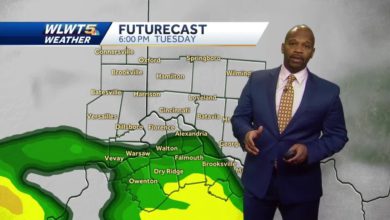

A new survey shows just how much people in the Cincinnati region were afflicted with active addiction during the COVID-19 pandemic, as staggering overdose deaths nationwide were announced.
One in 12 local adults had a family member or friend who overdosed during the pandemic in 2020. And 1 in 12 said they had a family member or friend who relapsed, the new poll shows. Put another way, the survey result translates to roughly 135,000 of the region's 1.7 million adults – or a little less than half of the population of the city of Cincinnati.
Interact for Health, a Kenwood-based health equity nonprofit, partnered with the University of Cincinnati Institute for Policy Research on the survey and announced the results July 15, as the Centers for Disease Control and Prevention reported record-high overdose deaths in the United States in 2020. The addiction-related questions were among those asked in a broader survey about the pandemic's impact in the region.
The impact is no surprise to addiction specialists.
The underlying issue, said Dr. Shawn Ryan, an addiction specialist who is president and chief medical officer for BrightView Health treatment centers, is the same as it has been since the beginning of the opioid epidemic: Funding.
"We are trying to address major battle wounds with Band-Aids," said Ryan, a board of directors chair with the American Society of Addiction Medicine.
"There is a social unwillingness to allocate the necessary resources."
The CDC reported that U.S. overdose deaths increased by 29.4% in 2020, reaching 93,000, the highest annual number ever recorded. The estimate of over 93,000 deaths translates to an average of more than 250 deaths each day, or roughly 11 every hour. Ohio's overdose death rate rose 29.1% in 2020 over 2019. Kentucky's jumped 53.7%, the CDC data show.

Interact for Health's survey results show that people responding from Northern Kentucky were more likely to know someone who'd relapsed than others in the Kentucky, Ohio and Indiana region that was covered in the survey.
"Those living in Boone, Campbell and Kenton counties, those aged 30-45 and those living in poverty were more likely to have a friend or family member who relapsed," an Interact for Health public release about the survey results states.
Dr. Mina "Mike" Kalfas, an addiction specialist with Journey Recovery Center in Crestview Hills, wasn't surprised.

"Therapeutic infrastructure in Northern Kentucky was lagging a little bit. We still don't have advanced syringe access, and services were not as consolidated as across the river," Kalfas said. "So the isolation in the lockdown was more effective at separating people from services." He also noted that despite the populations of Boone, Campbell and Kenton counties, there are rural pockets where access to services for addiction is difficult for some.
"We weren't ready for the hit as much and are slower to recover," Kalfas summarized. He also believes that the availability of alcohol, which was made an essential business in both Kentucky and Ohio, made it harder for people in recovery to remain drug-free.
Ryan said the bottom line with the record-high overdose death count nationwide is the lack of adequate funding to address the public health crisis.
People with substance use disorders should be treated by addiction specialists, with best practices, Ryan said. But the specialists must be paid appropriately, he said. Naloxone, which blocks the effects of opioids and can restore breathing in someone who's overdosing, costs money. And there needs to be a lot of it, and a lot disseminated, he said.

"We need more people, and money, to identify people" who need help, Ryan said. "We need more people, and money, to treat people." Harm reduction efforts, which provide services that help keep people alive and safe, need to be funded well, he said.
The record-breaking overdose deaths from 2020 must be addressed immediately, said Navdeep Kang, psychologist and chief clinical officer for BrightView Health.
"The statistics are outright terrifying and we should all be raising alarms," Kang said. "This is an emergency."

The Cincinnati area has on-demand treatment, he said, and people can find help through www.findlocaltreatment.com. (In Kentucky, you can also go to www.findhelpnowky.org.) Kang urged people to get Narcan, which can be obtained for free from syringe access services in the region. Ohio residents who are in contact with one or more people who use drugs may get free Narcan through a mail order service from Harm Reduction Ohio. In Northern Kentucky, residents may check the Northern Kentucky Health Department for access to Narcan and syringe access.
For the Interact for Health survey on substance use during the pandemic, the UC Institute for Policy Research interviewed a random sample of 879 adults in Greater Cincinnati, including an oversample of Black residents, by phone between Oct. 7 and Nov. 17, 2020. The margin of error for the survey is a plus or minus 3.3 percentage points, according to the researchers.
Source link








